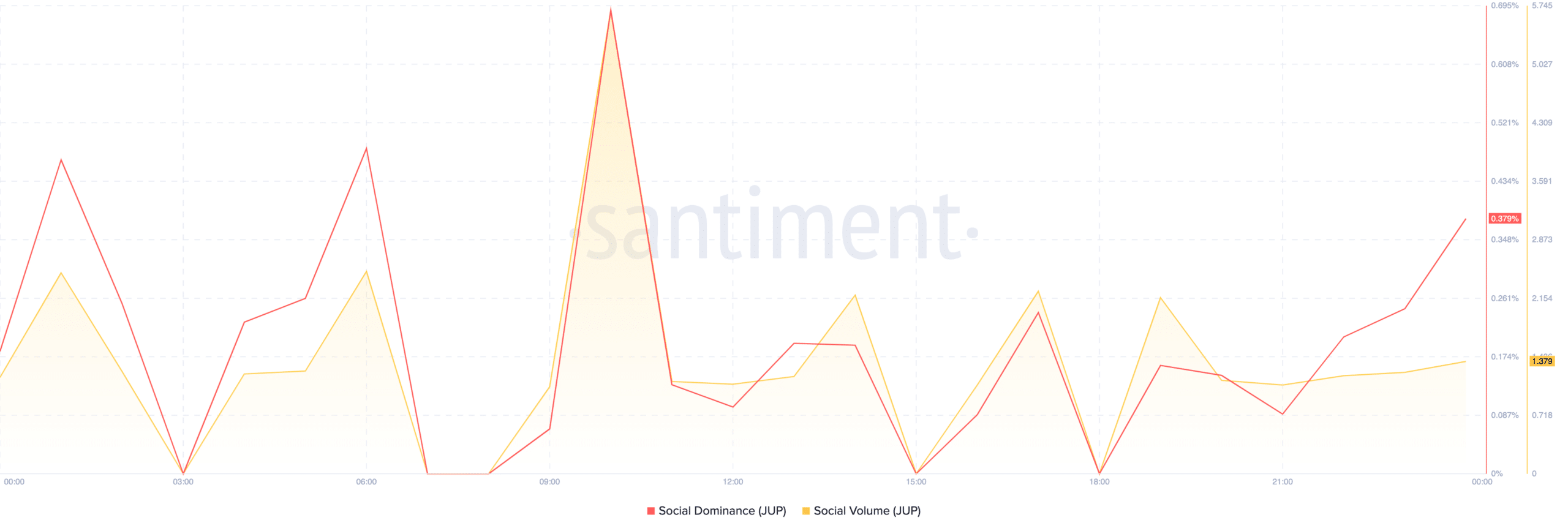- JUP recorded heavy selling pressure, with the short-term moving average moving below the 200-day MA
- The RSI signaled bearish momentum, with the indicator approaching oversold territory on the charts
Jupiter (JUP) was at the end of a major selling push on the charts at the time of writing. This selling pressure appeared to have offset last week’s modest gains. In fact, the altcoin’s short-term moving average had recently fallen below the longer-term 200-day MA, indicating a bearish crossover.
Such crossovers often mean that a downtrend may continue as the shorter-term momentum may weaken relative to the longer-term trend.


Source: TradingView
Technical indicators point to downward pressure
The RSI was below 40 at the time of writing, indicating bearish momentum and approaching oversold territory. An RSI below 30 typically indicates that the asset is becoming oversold, meaning a potential for a price rebound or stabilization if buyers intervene.
After a notable peak, which was an outlier, JUP prices have trended lower, consistently forming lower highs and lower lows – a classic bearish trend.
At the time of writing, the price appeared to be testing the MA50 as resistance, having previously fallen below. Failure to cross this line could lead to further drops in the charts.


Source: Santiment
There was also a notable one Highlight in social dominance, one that coincided with the peak in social volume. Simply put, JUP’s recent price movements have likely been influenced by trader reactions to news or market events.
For example, a double top was found 21 times with 14 confirmations. This pattern typically indicates a bearish reversal after two failures to break resistance.
Double bottom was indicated 32 times with 25 confirmations. This pattern typically indicates a bullish reversal after failing to break support twice.
The dominance of double bottom formations could indicate attempts to reverse the market trend. However, given the prevailing market conditions (price below the Ichimoku Cloud and moving averages), these did not hold up on the charts.

Source: TradingView
Finally, the ultimate oscillator was plotted in the upper part of the chart and momentum was measured. The recent dip in the oscillator corresponded with the price falling below the support level, indicating strong selling momentum.
A huge increase in buying volume could help push the price above its resistance levels, potentially reversing the current downtrend.

